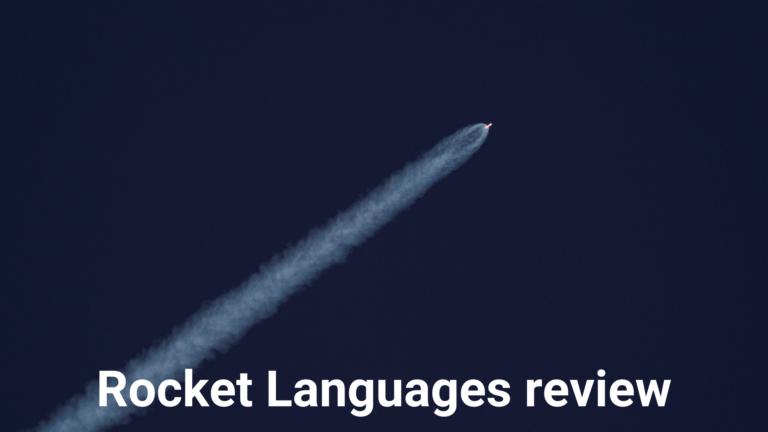Mondly vs Duolingo 2024: Which Language Learning App is Right for You?
This post may contain affiliate links. I may receive a commission for purchases made through these links at no additional cost to you.
Have you ever wanted to learn a new language? Technology now makes this easier with language learning phone apps. Duolingo and Mondly are two popular and successful options. But which application should you select to help you with your language objectives?
We will compare key differences between the applications across important factors:
- Building real-world language abilities
- Languages offered
- Teaching formats and lesson structures
- Games and motivation
- Pricing and premium features
By the end, you will have the necessary information to decide if Duolingo or Mondly fits your needs better.

Overview of Mondly vs Duolingo
Duolingo
Duolingo is one of the most well-known language learning applications globally. Its appeal comes from game-like lessons to motivate you. You match words to pictures, translate sentences, and listen to language audio. Over 500 million individuals have signed up, with courses for 42 languages available.
Mondly
Mondly uses a more traditional conversational approach with practical lessons. You learn through:
- Speech recognition
- Interactive audio conversations
- Flashcards
- Augmented Reality (AR)
- Virtual Reality (VR)
It provides a personalized learning path, with assistance from a virtual teacher. There are 41 languages available.
Mondly vs Duolingo: Strengths and Drawbacks
Duolingo
Strengths:
- Entertaining, game-style lessons for student engagement
- Short activities beneficial for brief practice
- Adapts difficulty by student ability
- Motivation through streaks and leaderboards
- Free version with main features
- Accessible and fun for new learners
Drawbacks:
- Can become repetitive over time
- At times lacks context with translation
- Limited scope at intermediate level
Mondly
Benefits:
- Discussion-focused lessons for real-world use
- Speech recognition to practice pronunciation
- Personal path designed for your requirements
- Supportive feedback from virtual instructors
- Covers less common languages
Limitations:
- Fewer gamification elements compared to Duolingo
- Repetitive audio conversations
Comparing Lesson Formats
Duolingo
Duolingo’s lessons use quick, game-style activities. This makes learning fun. Each lesson takes about 5-10 minutes and includes various exercise types:
- Multiple choice questions
- Translating between languages
- Listening and understanding
- Speaking practice
- Matching pairs
- Filling in blanks
Users get instant feedback on their answers. There is a “lives” system that encourages careful responses. Users earn rewards like experience points and virtual money for finishing lessons.
Mondly
Lessons focus on real-world topics and conversations. Exercises include:
- Building vocabulary
- Forming sentences
- Translating dialogues
- Listening to conversations
- Practicing speaking
Some lessons use virtual reality to fully engage users. New daily lessons are always available. Users track progress through completed topics.
Mondly vs Duolingo: Key Differences
Translation vs Dialogue Focus
Duolingo uses direct translation for vocabulary and phrases early on, then progresses to full sentences and paragraphs. This develops vocabulary but sometimes lacks real-world context.
Mondly teaches short dialogue exchanges to build conversation abilities. The speech recognition also improves pronunciation, preparing you to use the language practically.
Adaptable vs Personalized Learning Paths
Duolingo lessons adapt to your abilities, increasing or decreasing difficulty based on your performance.
Mondly evaluates your skills first, then creates a tailored learning plan targeting areas to improve most. A virtual teacher provides supportive guidance.
Gaming Motivation
Duolingo uses gaming elements well to motivate students, with streaks, skill bars, points, leaderboards, and “lives.”
Mondly adds some gaming elements like streaks and leaderboards but focuses more on conversing with the virtual teacher. It also offers VR and AR elements for immersive learning experiences.
Mondly vs Duolingo: Pricing Comparison
Both offer free versions, but full access requires a paid subscription:
Duolingo Pricing
- Free version: Yes
- Paid monthly: $12.99
- Paid annually: $83.88 ($6.99 per month)
Mondly Pricing
- Restricted free version
- Paid monthly: $10
- Paid annually: $48 ($4 per month)
- Lifetime access: $100
Mondly is substantially less expensive if selecting the annual plan. However, Duolingo’s free version offers more features.
Conclusion
For a fun experience good for beginners, Duolingo is best. We recommend Mondly for intermediate learners wanting more conversation practice. Test them both to see which style you prefer, and remember – consistency is key in language learning!






